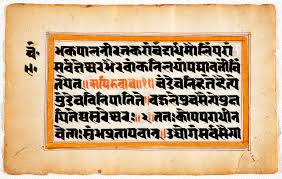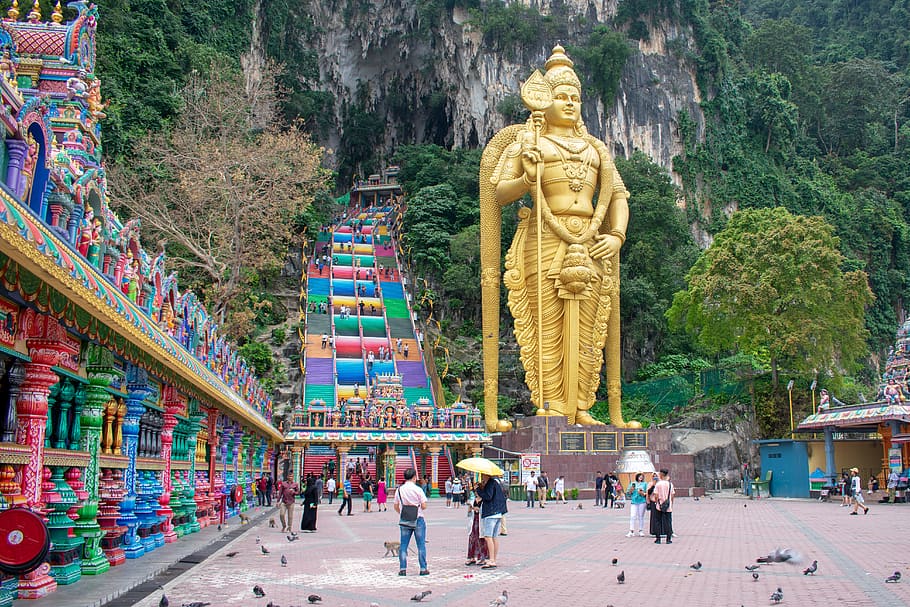Hinduism is a name applied by foreigners to the people living in the region of the Indus River. In the nineteenth century under colonial British rule used this to categorize these people for census-taking purposes. (Living Religions, 2005)
Hinduism is one of the world’s oldest religions, beginning in the eighth century. Although it was difficult, the Hindu co-existed with Buddhism and Jainism, which were growing within India during this period. (Living Religions, 2005)
In the Hindu religion the creator of the religion Brahma is not worshiped, instead Hindu worship other expressions of Brahman according to Religions and Ethics. Wenner, explains that the basic belief of Hinduism is the spirit of all animals and humans are reincarnated, coming back to earth repeatedly in different forms. Their social standing in the reincarnated life is how they conducted themselves in their previous life. Wenner continues to write, “Today, a Hindu can be polytheistic (more than one god), monotheistic (one god), pantheistic (god and the universe are one), agnostic (unsure if god exists), or atheistic (no god) and still claim to be Hindu.” (Fisher, Mary Pat, 2005)
According to Basic Beliefs of Hinduism in the Hindu religion is the realization of reality and self-reflection, devotion to the god that the people of the Hindu religion choose to follow rituals is the path to salvation. In the Hindu faith, it is important to mention all the universal ideas. (Fisher, Mary Pat, 2005).
The Verdes is the sacred text for the Hindu religion, much like the Bible is for Christians.
The Verdes is full of incantations, hymns as well as ancient rituals of ancient India. Among them, four are texts that are known as the most ancient religious text in existence. The Book of the Dead, Enuma Elish, I Ching, and Avesta. “The Vedas are also the most ancient extensive texts in an Indo-European language, and as such are invaluable in the study of comparative linguistics. (Religion & Ethics, 2005)
Hindu’s worship the cow, it is known to them as, “The cow is our Mother, for she gives us her milk.” (Living Religions, 2005). The Upanishads Hare explains, on the written between 800 and 400 B.C. they explain how the soul can be reunited with the truth by contemplation, meditation, and the doctrine of kar( Hare, John, Bruno, 2006.)
 The Puranas, was written after the Verdes, the writings are of the history of the Universe, from the beginning of creation to its destruction. The writings are written in three categories, each of which is named for a deity, they are, Shiva, Brahma, and Vishnu. Many other writings are categorized as ‘Upapuranas.'(Hare, John, Bruno, 2006)
The Puranas, was written after the Verdes, the writings are of the history of the Universe, from the beginning of creation to its destruction. The writings are written in three categories, each of which is named for a deity, they are, Shiva, Brahma, and Vishnu. Many other writings are categorized as ‘Upapuranas.'(Hare, John, Bruno, 2006)
Bhagavad Gait often referred to as part of the sixth book of Mahabharata. Written between 400 and 300 B.C., it is a philosophical conversation between god Krishna and the warrior Arjuna. This is the most accessible of the Hindu scriptures and anyone interested in Hinduism must-read. In the Bhagavad Gita there are many Hindu philosophies written about, they are devotion, meditation, selflessness and duty. (Hare, John, Bruno, 2006)
In Living Religions, it can track the Hindu religion from 8000BCE when believers of the religion and according to Indian tradition, Vedas were first heard by rishis. (Fisher, Mary Pat, 2005) The religion is still intact and strong to this day. The religion has had many changes over the centuries, and has survived. The modern information is easiest to follow and there have been important details that have happened in the last 150 years.
In the 1800’s the modernization of the religion seemed to begin by the following events. “1828 Brahmo Samaj revitalization, 1836 Life of Ramakrishna, 1857 British rules of India, 1869 Life of Mahatma Gandhi, 1875 Arya Samaj reform.” In the 1900’s it continued with, 1947 Independence, partition of India and Pakistan 1992 Demolition of Babri mosque. Then in 2002, violence erupts again over attempts to build Ram Temple at Ayodhya.” (Religion & Ethics, 2005)
Hindu believers feel as though everything in their body can be healed through their soul, mind and body as the spine is the key to the healing process. They refer to this as the chakras, this is very close to the Buddhist belief. The Hindu shares the ritual of chanting. This is their form of pray, which also includes yoga, believing that the art of yoga raises the chakras to the crown, or the highest point to meet with the god or goddess of worship. This will bring them much pleasure. (Living Religions, 2005)
Hinduism is an extremely complicated religion. Hinduism takes years to learn and master all the meanings of the religion, what the prayers mean and why they are said. The complex combination between prayers, rituals, gods, goddesses, environment, and self. It takes years to completely understand. Hinduism is thought of as a practiced religion, there are many mysteries that only spending much time involving one’s self in the entire embodiment of the religion could one possibly understand all the twists and turns of this religion. Hinduism is about and what it means to be Hindu, mind, body, and soul.
References
Fisher, Mary Pat, Living Religions, Sixth Edition. (2005) Published by Prentice
Hall Copyright 2005 by Pearson Education, Inc
Religion & Ethics, (2006) Retrieved, Aug. 4, 2007
http://www.bbc.co.uk/religion/religions/hinduism/index.shtml
Hare, John, Bruno, Hinduism Sacred Text Achieves, (2006). Open Source for the
Human Soul, Retrieved Aug 4, 2007
http://www.sacred-texts.com/hin/index.htm






